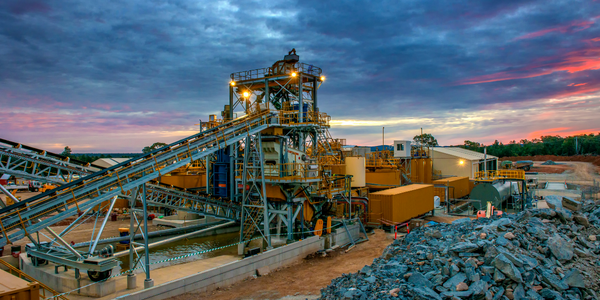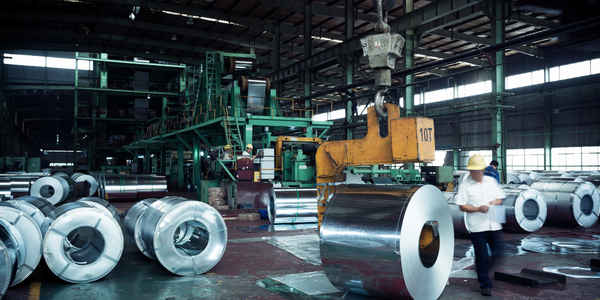Technology Category
- Analytics & Modeling - Digital Twin / Simulation
- Sensors - Temperature Sensors
Applicable Industries
- Metals
- Transportation
Applicable Functions
- Maintenance
- Procurement
Use Cases
- Digital Twin
- Virtual Prototyping & Product Testing
Services
- System Integration
- Testing & Certification
About The Customer
Hatch is a global professional services company that was retained as the engineering, procurement, construction, and manufacturing contractor to deliver a sulfuric acid plant in Katanga, a remote province located in the southern part of the Democratic Republic of the Congo (DRC). The DRC is a resource-rich area with abundant reserves of copper and cobalt, with copper accounting for 50% of all DRC exports. The sulfuric acid plant is being built to sustain one of the largest copper mining operations in the DRC, as the copper mines require sulfuric acid to leach copper oxide minerals. The plant will manufacture thousands of tons of acid daily and will exceed world standards for sulfur dioxide emissions, optimizing environmental sustainability.
The Challenge
Hatch, a global professional services company, was tasked with delivering a $245 million sulfuric acid plant in the remote region of Katanga, Democratic Republic of the Congo (DRC). The plant was critical to sustain one of the largest copper mining operations in the DRC, as the copper mines required sulfuric acid to leach copper oxide minerals. The project presented several challenges, including the remote location, logistical and environmental difficulties, and a fast-tracked schedule. The plant was to feature a 1,400 ton-per-day manufacturing facility and an electrical waste heat power generation system with a steam turbine unit, which was critical due to the limited power grid supply in the area and complex integration with the existing electrical network. Hatch needed to overcome these complexities and accommodate the accelerated timeline with a team of engineers distributed globally across five offices. The company sought a sustainable technology solution, digitalizing all workflows and deliverables.
The Solution
Hatch implemented a collaborative digital strategy using Bentley’s open applications, which streamlined workflows and facilitated quality engineering processes that saved time and costs. The project team used STAAD to model and analyze the structural steel components, and OpenPlant and OpenBuildings Designer to create a digital twin model of the entire acid plant. ProjectWise served as the collaborative platform to establish an open, connected data environment to manage and share information across five globally dispersed engineering offices. Bentley’s open applications provided flexibility within the design environment, enabling a single 3D model to be used for layout, analysis, design, and fabrication. This flexibility also optimized coordination throughout all stages of engineering and construction, as well as presented opportunities to capitalize on digitalization to improve efficiencies. The interoperable digital technology allowed operations teams to interact in the model environment for hazard and operability study checks, improving operations reviews and enhancing operational safety.
Operational Impact
Quantitative Benefit

Case Study missing?
Start adding your own!
Register with your work email and create a new case study profile for your business.
Related Case Studies.

Case Study
Goldcorp: Internet of Things Enables the Mine of the Future
Goldcorp is committed to responsible mining practices and maintaining maximum safety for its workers. At the same time, the firm is constantly exploring ways to improve the efficiency of its operations, extend the life of its assets, and control costs. Goldcorp needed technology that can maximize production efficiency by tracking all mining operations, keep employees safe with remote operations and monitoring of hazardous work areas and control production costs through better asset and site management.

Case Study
KSP Steel Decentralized Control Room
While on-site in Pavlodar, Kazakhstan, the DAQRI team of Business Development and Solutions Architecture personnel worked closely with KSP Steel’s production leadership to understand the steel production process, operational challenges, and worker pain points.

Case Study
Airport SCADA Systems Improve Service Levels
Modern airports are one of the busiest environments on Earth and rely on process automation equipment to ensure service operators achieve their KPIs. Increasingly airport SCADA systems are being used to control all aspects of the operation and associated facilities. This is because unplanned system downtime can cost dearly, both in terms of reduced revenues and the associated loss of customer satisfaction due to inevitable travel inconvenience and disruption.

Case Study
Bluescope Steel on Path to Digitally Transform Operations and IT
Increasing competition and fluctuations in the construction market prompted BlueScope Steel to look toward digital transformation of its four businesses, including modern core applications and IT infrastructure. BlueScope needed to modernize its infrastructure and adopt new technologies to improve operations and supply chain efficiency while maintaining and updating an aging application portfolio.

Case Study
IoT-based Fleet Intelligence Innovation
Speed to market is precious for DRVR, a rapidly growing start-up company. With a business model dependent on reliable mobile data, managers were spending their lives trying to negotiate data roaming deals with mobile network operators in different countries. And, even then, service quality was a constant concern.

Case Study
Digitize Railway with Deutsche Bahn
To reduce maintenance costs and delay-causing failures for Deutsche Bahn. They need manual measurements by a position measurement system based on custom-made MEMS sensor clusters, which allow autonomous and continuous monitoring with wireless data transmission and long battery. They were looking for data pre-processing solution in the sensor and machine learning algorithms in the cloud so as to detect critical wear.







